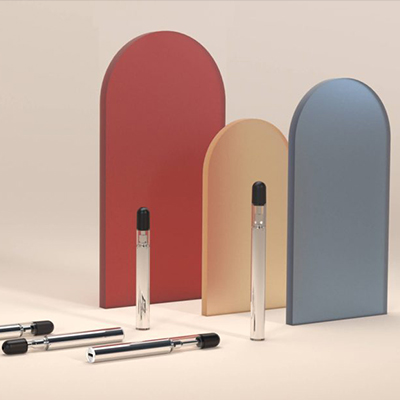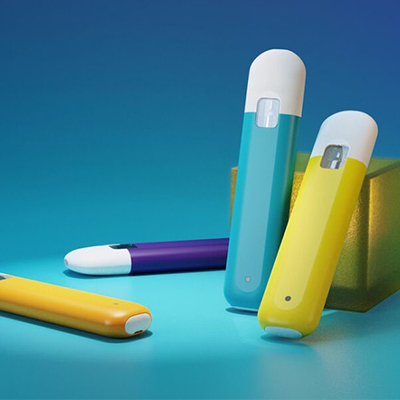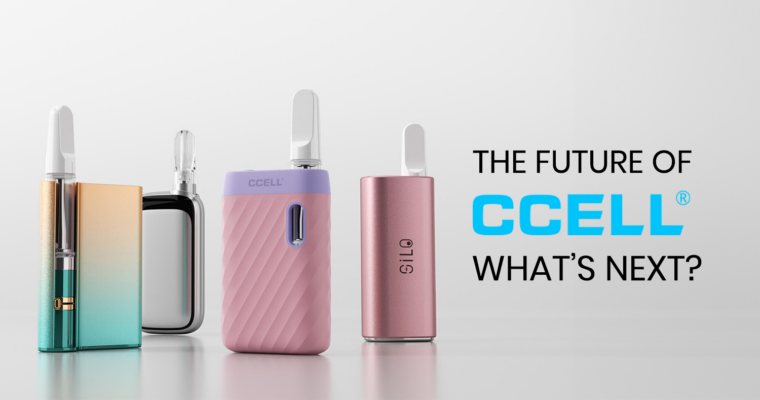One of the biggest reasons why you’ve switched – or are considering switching – from smoking your favorite herb to vaping it is because you’re concerned about what you put into your body. You know that smoking means you’re inhaling carbon monoxide and burnt plant material, and switching to vaping allows you to avoid those things.
Vaping, however, has health concerns of its own. To ensure that vaping will be as safe for you as it can be, it’s important to use the best equipment available. CCELL® cartridges and vape batteries aren’t just popular because they’re the best-performing products on the market – they’re also popular because they’re the safest products. CCELL® takes its position as the industry leader very seriously and has continually iterated its products over the years to take advantage of the latest advances in health and safety.
In this article, we’ll address the most common safety questions that people may have about CCELL® products as they compare to other oil and wax vaping products.
This page is a part of our Comprehensive Guide to CCELL® Technology. Want to learn more? Explore the full guide now.
Do CCELL® Products Contain Heavy Metals?
CCELL® vape coils are made from 316L stainless steel, which consists primarily of iron, chromium, nickel and molybdenum. It is possible for any alloy to contain trace amounts of lead or other heavy metals, and that’s why CCELL® tests its products to confirm their purity. CCELL® works with a licensed laboratory in California for product analysis, and CCELL®’s vape coils significantly exceed the regulatory standards for heavy metal content in both California and Michigan.
Does Using a CCELL® Vape Cartridge Mean that I’ll Inhale Metal Oxides?
One of the reasons why CCELL® uses 316L stainless steel in its products is because of its excellent corrosion resistance. Some of the other things that use 316L stainless steel include food processing appliances, medical equipment, divers’ watches and potable water pipes. Even 316L stainless steel is susceptible to oxidation, though, so CCELL® treats its coils with a corrosion-resistant coating that reduces oxidation by up to 20 percent.
Do CCELL® Products Release Formaldehyde?
It’s possible for any vaping device to release formaldehyde, but the use of a ceramic core rather than a cotton wick greatly reduces the production of carbonyls and ketones such as formaldehyde – especially as compared to smoking. In 2022, the journal Scientific Reports published a study in which the emissions from a vaping device with a ceramic core were compared to the emissions from a cigarette. Although formaldehyde was detected in the emissions from the vaping device, formaldehyde production was reduced by 99.4 percent compared to a cigarette. In addition to the inherent safety of ceramic coils in general, CCELL® claims that its products produce aldehydes and ketones at rates up to 57 percent lower than other oil and wax vaping products.
Do CCELL Products Contain Vitamin E Acetate?
CCELL® products do not contain Vitamin E Acetate, but that’s true of all vaping hardware. To ensure that pre-filled vaping products such as vape cartridges and disposable vapes are safe to use, you need to know as much as possible about what’s in them. To ensure that you always know what you’re inhaling, you should either buy empty vape products and fill them yourself or buy pre-filled products only from a company that analyzes those products through a third-party laboratory and publishes the results for the public to view.
What Product Safety Standards Apply to CCELL® Products?
Although there are no universal regulatory standards that apply to herbal vaping products, there are certain standards that apply to battery-powered devices and to consumer electronics in general. Otherwise, it’s up to the vaping industry to police itself – and as with every other aspect of its products, CCELL® has taken the lead there. Here are just a few of the things that CCELL® is doing to ensure that its products meet the highest possible standards for safety and consistency.
- CCELL®’s lithium-ion batteries meet the UN 38.3, PI967 and SP188 standards for safe transportation.
- Many of the materials and components in CCELL®’s products have safety certificates from regulatory authorities such as FDA, FCC, CE, UL and RoHs.
- CCELL® independently conducts its own product safety tests, which include battery load testing, short circuit testing, heat resistance testing, impact testing and more.
What Safety Features Do CCELL® Batteries and Vaporizers Have?
Although this article has focused primarily on the safety of the CCELL® ceramic vape coil, vaporizers have safety concerns of their own. That’s because they contain lithium-ion batteries, which store a great deal of power and must be handled with care. CCELL® vaporizers and vape batteries have several built-in safety features including short circuit detection, overheating protection, coil resistance testing and battery voltage monitoring. When you puff on a CCELL® vaporizer or press the battery’s activation button, the device instantly and automatically runs through all of the above safety tests and shuts down in the event that a test doesn’t pass.







